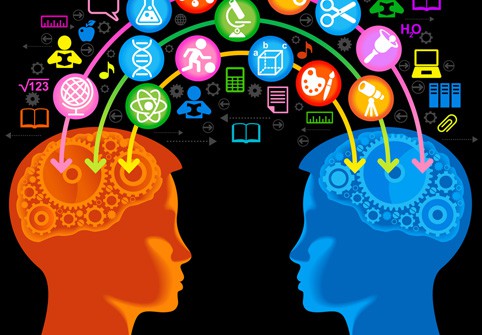10 Elements of Competency-Based Learning

Competency-based learning (or standards-based or performance-based if you will) is based on two important ideas:
- Students should meet learning expectations—passing kids along with a weak foundation means they will never achieve higher level knowledge and skills and will be excluded from the idea economy.
- Students should show what they know—it’s not about turning work in, earning point, or showing up to class, they should demonstrate in several ways that they have mastered important knowledge, skills, and abilities.
For most people that sounds logical and for twenty years we’ve been saying “it’s about learning not time” and “learning is fixed and time is variable.” Only it’s not—it’s all about time and the structures we’ve ensconced with policies, budgets, and contracts.
Since Horace borrowed the idea from the Prussians we’ve been batch-processing kids based on birthdays through a print curriculum. This batch-print system was moderately efficient until we tried to retrofit it to work for all kids. It just created a mess of tacked on services and a crazy patchwork quilt of courses. As educational demands of society increased, it became obvious that the batch-print system is a disaster for at least two thirds of our kids.
The shift to personal digital learning offers a better alternative. Specifically, a system based on demonstrated competence and powered by personalized learning technology holds the potential to double the number of students prepared for college and careers in this decade.
However, competency-based systems are fundamentally different than batch-print. Following are ten elements of a competency-based system:
- Intellectual mission that focuses resources and behaviors on productive habits of mind and preparation for participation in college, careers, and civic life.
- Standards that express in some detail what students should know and be able to do.
- Progress monitoring, historically thought of as grading, and achievement recognition systems, historically thought of as class rank.
- Grouping and scheduling systems—when, why and how groups are used when learning not age cohorts is the dominant organizing principle.
- Reporting to the outside world that still thinks in courses, credits, and grades.
- Content that supports self-directed and customized learning.
- Tools that facilitate standards-based challenges, collaboration, and scheduling.
- Teacher support, preparation and development for a dynamic environment with differentiated (i.e., different levels) and distributed (i.e., different locations) staffing.
- Evaluation systems that helps to determine student learning and how experiences and adults are contributing.
- Community connections and supports for student success.
Unfortunately, it’s tough create/manage competency-based environments because the tool set is just not very good yet. And even new platforms/apps assume a age cohort system. Next week I’ll cover 10 edtech advances that will promote competency-based learning.
This blog first appeared on CompetencyWorks, an iNACOL project sponsored by the Nellie Mae Education Foundation and managed by Chris Sturgis. Check out the new site for everything you need to know about competency-based learning. Tom is a director of iNACOL.





Karen Mahon
Thanks, Tom! This is a great post and I couldn't agree more!!!
Replies
Tom Vander Ark
Thanks Karen. What tools would make it easier to set up and manage competency-based schools? I have a list of 10 but wonder what's on your list.
Shana King
Interesting ideas. I have only recently become aware of the discussion of designing competency based
learning systems. An aspect that I have been intrigued by that you did not mention is the effect it would have on student motivation. I have not seen any studies, but I would think that basing promotion strictly on competency instead of on age or "time in" would encourage a greater sense of self purpose and personal responsibility. What do you think? I am a student in Dr. Setser’s ECI 509 class and this is my first look at this site, I have very much enjoyed the post I have read so far.
Replies
Tom Vander Ark
For at least some students, the ability to take ownership of time, rate, and path of learning is extremely motivating.
Deeper understanding of student motivation is likely to be the most important breakthroughs of this decade.
Kevin Byers
We have been working to implement a competency based system in our district and would totally agree with you. The tools just don't exist (for the most part), no matter what the vendors try to tell you!